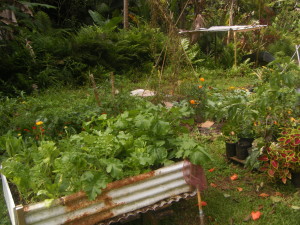Warning: Illegal string offset 'filter' in /var/www/wp-includes/taxonomy.php on line 1725
What are nematodes?
“If all the matter in the universe except nematodes were swept away, our world would still be dimly recognizable, and if, as disembodied spirits, we could then investigate it, we should find its mountains, hills, valleys, rivers, lakes, and oceans represented by a film of nematodes.” Wrote Nathon Cobb, who identified over 1000 different spices of nematodes and is a well known scientist of his time.
Besides the popular known parasitic nematodes that damage plant roots, little is known about the abundance of nematodes that reside in our soils and in our life. In another book, “The Earth Moved” by Amy Stewart she sites a study about finding over 90,000 nematodes residing in one rotting apple. They can’t all be bad if they are everywhere, right!
Did you know?
Nematodes are one of the most abundant animals on our planet, out numbered by only arthropods (insects, spiders, flies etc). They are roundworms with no segments making them different from the common earthworm and a lot smaller, yet considerably larger than protozoans. There are predatory and beneficial nematodes and in healthy soil there is more beneficial ones then predatory ones. They are just one of several microbes that live under the surface of the soil.
Good nematodes!
They have several roles in the soil and help the gardener in many ways. Predatory nematodes are sold commercially for use on pest like the cutworm and slugs. Their size helps create tunnels throughout the soil allowing for easy passage of air and water. They also help “taxi” smaller microbes like bacteria to different spots in the soil. This can be a benefit, especially if you would like to spread nitrogen fixing bacteria’s throughout your bean sprout!
What do they eat?
Nematodes consume several types of food including other microbes like bacteria, protozoans, live plant matter, roots, algae and even some small invertebrates and arthropods (slugs and grubs). They aid in mineralization and create a food source in and around the roots, for the plant to easily absorb. Needing less nitrogen to survive than protozoans, nematodes excrete more plant available nitrogen. This is a major positive for any natural gardener. In a healthy soil environment, nematodes are a beneficial microbe, and because we can’t live life without them, let’s work with them, and support microbial life to keep them checked and balanced.
References:
Denice de Oliveira Almeida, Osmar Klauberg Filho, Henrique Cesar Almeida, Luciano, Gebler, Aline Franciane, Felipe. 2010 “Soil microbial biomass under mulch types in an integrated apple orchard from Southern Brazil”. Sci. Agric. (Piracicaba, Braz.), v.68, n.2, p.217-222, March/April 2011
Herms, Daniel A, Lloyd John E, and Stinner, Benjamin R. 1999. “Effects of Organic Mulches and Fertilization on Soil Microbial Activity, Nutrient Availability, and Growth of River Birch”. Department of Entomology, The Ohio State University, Ohio Agricultural Research and Development Center. Wooster, Ohio
Hoorman, James J, and Islam, Rafiq. 2010. “Understanding Soil Microbes and Nutrient Recyling”. Ohio State University, Extension
Jean M. A., Marshall Bradley, Nick & Fern, 1994. “Growing Fruits and Vegetables Organically”. Rodale Press
Gladstone, Nancy. 1997. “Action Sheet 34: Mulching, So what is mulching?” Outreach TVE Soils Education Pack:Soil Improvement in the Tropics article on Mulching.
Lownfels, Jeff & Lewis, Wayne. 2010. “Teaming with Microbes, The Organic Gardener’s Guide to the Soil Food Web”. Timber Press: Portland, Oregon.
Stewart Amy, 2004. “The Earth Moved, On the Remarkable Achievements of Earthworms”. Algonquin Books of Chapel Hill: North Carolina.
No Spray

